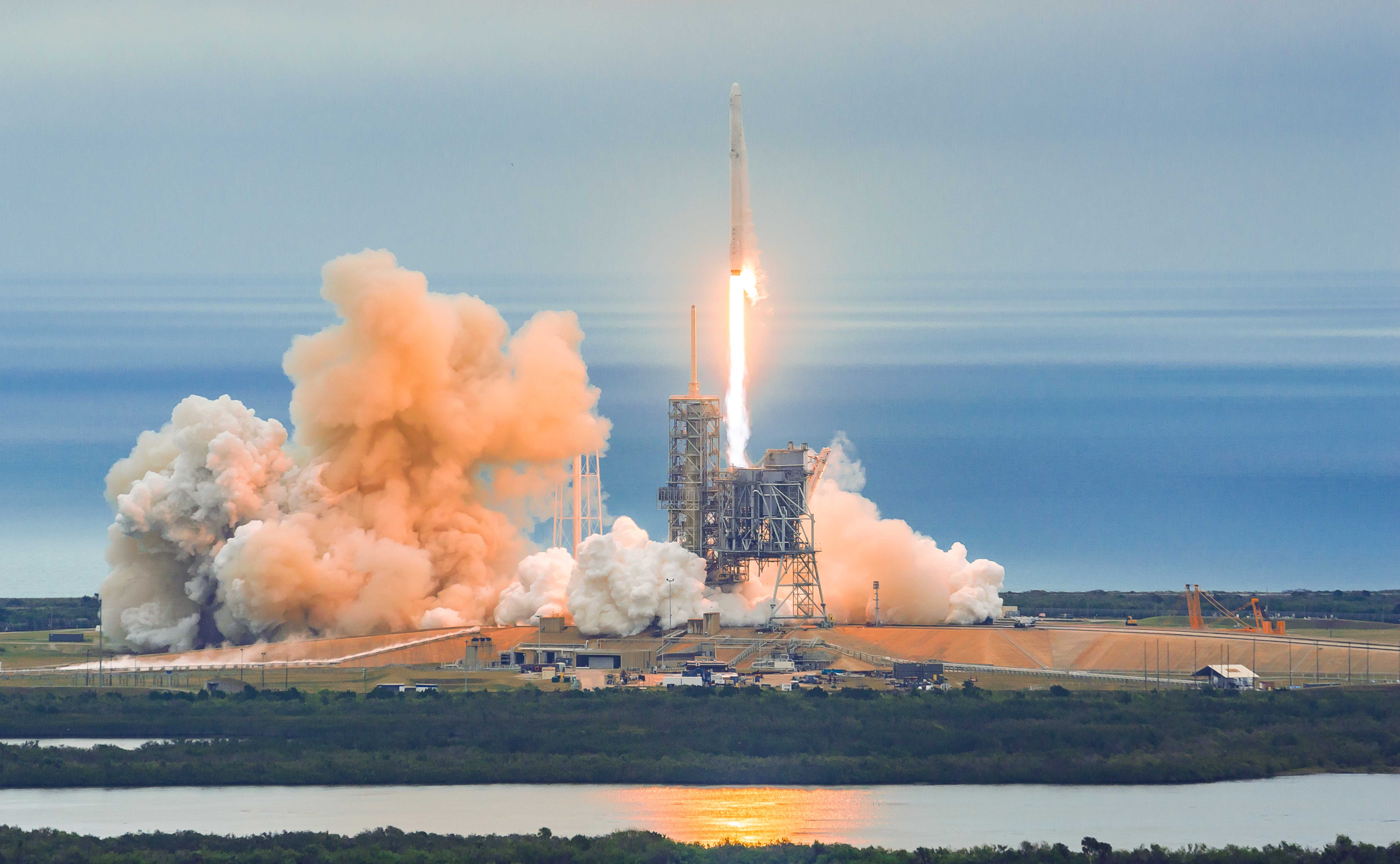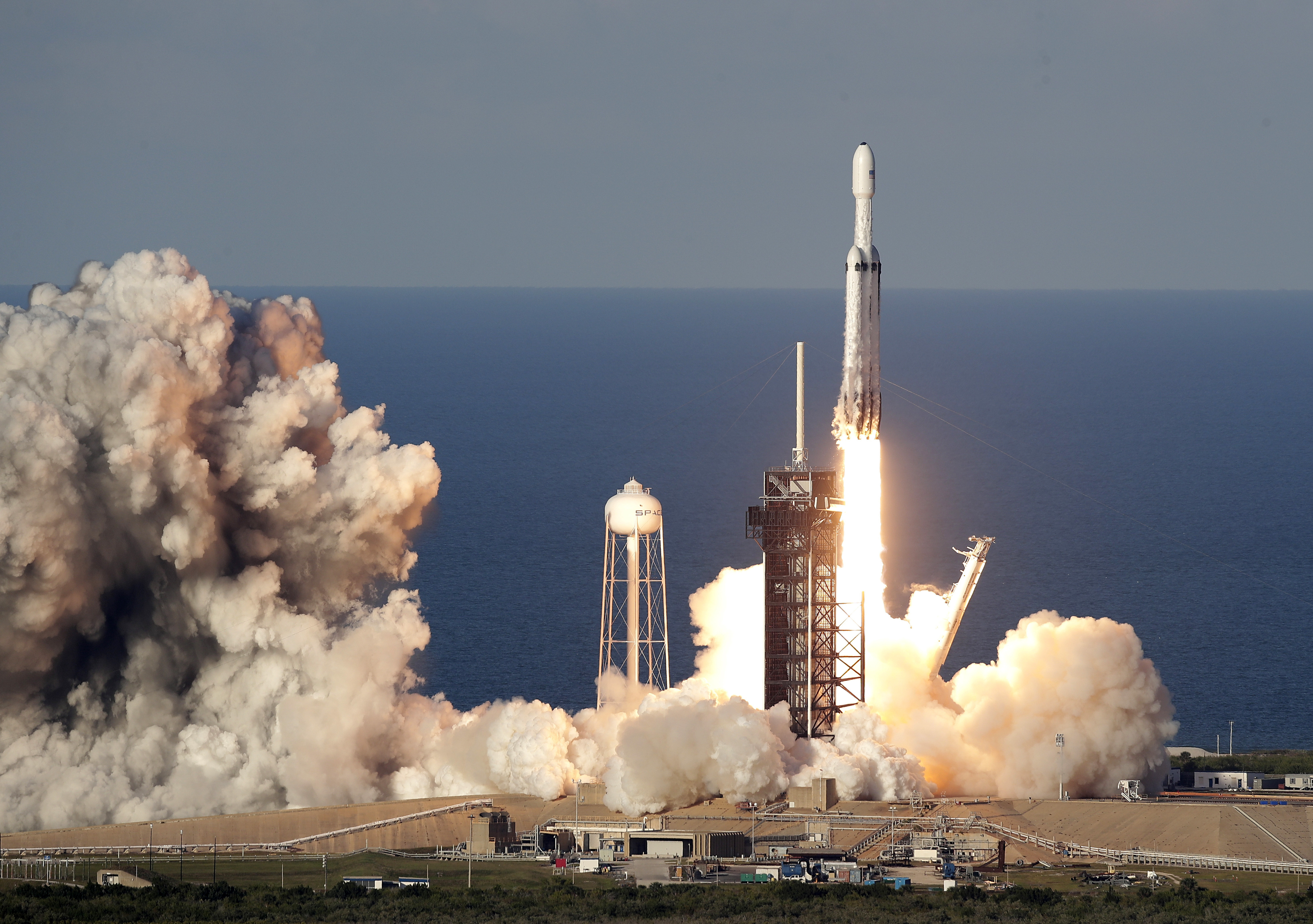SpaceX Launch History and Milestones

Spacex launch – SpaceX has made significant strides in space exploration since its inception. Its launch history is marked by numerous successful missions, technological advancements, and key milestones.
SpaceX’s launch captivated the world, showcasing the advancements in space exploration. Yet, amidst the awe-inspiring spectacle, it’s worth noting the efforts of individuals like Jamaal Bowman , who work tirelessly to address social and economic disparities. As SpaceX continues its mission to push the boundaries of space travel, let us not forget the importance of addressing challenges on Earth.
Timeline of SpaceX Launches
- 2006: Falcon 1’s maiden launch (unsuccessful)
- 2008: First successful Falcon 1 launch
- 2010: First successful Falcon 9 launch
- 2012: First commercial satellite launch by Falcon 9
- 2015: First landing of a Falcon 9 first stage
- 2016: First successful reuse of a Falcon 9 first stage
- 2017: First launch of the Falcon Heavy
- 2019: First commercial crew launch by Falcon 9
- 2020: First launch of the Crew Dragon spacecraft
Evolution of SpaceX’s Launch Vehicles
SpaceX has continuously improved its launch vehicles over time, enhancing their capabilities and reducing costs.
The anticipation surrounding the upcoming spacex launch is palpable. With its cutting-edge technology and ambitious mission, the launch promises to push the boundaries of space exploration. As the countdown begins, enthusiasts around the world eagerly await the moment when the rocket ascends towards the stars, carrying with it the hopes and dreams of humanity’s next chapter in space.
The spacex launch is a testament to the human spirit’s relentless pursuit of knowledge and adventure.
- Falcon 1: Small, two-stage rocket used for early launches
- Falcon 9: Medium-lift, two-stage rocket capable of carrying heavy payloads
- Falcon Heavy: Heavy-lift rocket composed of three Falcon 9 cores, designed for missions requiring high payload capacity
- Starship: Super-heavy-lift, reusable spacecraft system under development for future missions to Mars
Key Milestones and Achievements
SpaceX’s launch history is marked by several key milestones and achievements, including:
- First private company to launch a liquid-fueled rocket into orbit
- First private company to successfully land a rocket after a launch
- First private company to send a spacecraft to the International Space Station
- First private company to launch humans into orbit
SpaceX Launch Vehicle Capabilities and Innovations

SpaceX has developed a range of launch vehicles, each with unique capabilities and innovative features. These vehicles have played a crucial role in the company’s success and have revolutionized the space launch industry.
The Falcon 9 is SpaceX’s workhorse rocket, responsible for the majority of its launches. It is a two-stage rocket capable of carrying payloads of up to 22,800 kilograms to low Earth orbit. The Falcon 9’s first stage is reusable, allowing SpaceX to significantly reduce launch costs.
The Falcon Heavy is a more powerful version of the Falcon 9, consisting of three Falcon 9 first stages strapped together. It is capable of lifting payloads of up to 63,800 kilograms to low Earth orbit, making it one of the most powerful rockets in operation today.
Starship is SpaceX’s next-generation launch vehicle, designed to carry both cargo and crew to Mars and beyond. It is a fully reusable rocket, consisting of a Super Heavy booster and a Starship spacecraft. Starship is capable of carrying payloads of up to 100,000 kilograms to low Earth orbit and has the potential to revolutionize space exploration.
Innovative Technologies and Design Features, Spacex launch
SpaceX’s launch vehicles incorporate a number of innovative technologies and design features that set them apart from competitors.
- Reusable rockets: SpaceX’s Falcon 9 and Falcon Heavy rockets are both reusable, meaning that their first stages can be recovered and reused for subsequent launches. This significantly reduces launch costs and makes space access more affordable.
- Methane propulsion: SpaceX’s launch vehicles use methane as their propellant, which is more efficient and environmentally friendly than traditional propellants such as kerosene. Methane also produces less soot and emissions, reducing the environmental impact of launches.
- Vertical landing: SpaceX’s Falcon 9 and Falcon Heavy rockets are capable of landing vertically on a landing pad after completing their missions. This allows for the recovery and reuse of the rockets, further reducing launch costs.
Advantages and Disadvantages
SpaceX’s launch vehicles offer a number of advantages over competitors, including:
- Lower launch costs: SpaceX’s reusable rockets and methane propulsion system significantly reduce launch costs compared to traditional launch vehicles.
- Increased launch frequency: The reusability of SpaceX’s rockets allows for a higher launch frequency, enabling more frequent access to space.
- Proven reliability: SpaceX’s launch vehicles have a proven track record of reliability, with a high success rate for both commercial and government missions.
However, SpaceX’s launch vehicles also have some disadvantages:
- Payload capacity: SpaceX’s launch vehicles have a lower payload capacity than some competing rockets, such as the Delta IV Heavy and the Ariane 5.
- Limited launch sites: SpaceX’s launch vehicles are currently only launched from a few select sites, which can limit their flexibility for certain missions.
- Still in development: SpaceX’s Starship launch vehicle is still in development and has not yet been proven in operational use.
SpaceX Launch Site Operations and Facilities

SpaceX operates several launch sites around the world, including Cape Canaveral in Florida, Vandenberg Space Force Base in California, and Starbase in Texas. These facilities provide the necessary infrastructure, support systems, and environmental controls to ensure the safe and efficient launch of SpaceX’s rockets and spacecraft.
Cape Canaveral
Cape Canaveral is SpaceX’s primary launch site, located on the coast of Florida. It has a long history of space exploration, dating back to the Apollo missions. SpaceX has leased Launch Complex 39A from NASA, which was previously used for the Space Shuttle program. The complex has been modified to accommodate SpaceX’s rockets and spacecraft, including the Falcon 9 and Falcon Heavy.
Vandenberg Space Force Base
Vandenberg Space Force Base is located on the central coast of California. It is used for launches that require a polar or sun-synchronous orbit. SpaceX has constructed a launch pad at Vandenberg, known as SLC-4E, which is used for the Falcon 9 and Falcon Heavy rockets.
Starbase
Starbase is SpaceX’s newest launch site, located in Boca Chica, Texas. It is still under development but is expected to become a major launch facility for SpaceX in the future. Starbase is intended to be used for the launch of Starship, SpaceX’s next-generation rocket and spacecraft system.
Infrastructure and Support Systems
SpaceX’s launch sites are equipped with a range of infrastructure and support systems to facilitate the launch of rockets and spacecraft. These include:
- Launch pads: The launch pads provide a stable platform for the rockets and spacecraft during liftoff.
- Fuel and oxidizer storage and handling systems: These systems store and transfer the fuel and oxidizer used by the rockets.
- Ground support equipment: This equipment includes cranes, gantries, and other equipment used to assemble and prepare the rockets and spacecraft for launch.
- Mission control centers: These centers monitor the launch and flight of the rockets and spacecraft.
Environmental Impact and Sustainability Measures
SpaceX recognizes the potential environmental impact of its launch operations and has implemented several measures to minimize its impact. These measures include:
- Using environmentally friendly propellants: SpaceX’s rockets use liquid oxygen and kerosene, which are less polluting than other propellants.
- Recycling and reusing launch vehicles: SpaceX is developing reusable rockets and spacecraft to reduce the amount of waste generated by its operations.
- Monitoring and mitigating noise pollution: SpaceX monitors the noise levels generated by its launches and takes steps to mitigate the impact on nearby communities.
The anticipation for SpaceX’s upcoming launch is palpable, but for now, all eyes are on the thrilling Stanley Cup Game 7. The tension and excitement of the ice hockey battle will soon give way to the awe-inspiring spectacle of a rocket soaring into the cosmos, marking another milestone in human space exploration.
As SpaceX’s launch captivates the world, another significant event unfolds in the digital realm. The recent cyberattack onCDK Global, a leading provider of dealership management software, has sent shockwaves through the automotive industry. Experts are closely monitoring the situation, providing updates and insights at cdk cyberattack update.
Amidst the anticipation surrounding SpaceX’s mission, it is crucial to stay informed about both celestial and terrestrial events that shape our world.
SpaceX’s recent launch was a testament to human ingenuity and the relentless pursuit of the unknown. Amidst the excitement, one cannot help but draw parallels to the groundbreaking work of Tamayo Perry , a visionary artist whose explorations of the human form and the cosmos have captivated audiences worldwide.
Like SpaceX’s rockets soaring into the heavens, Perry’s sculptures transcend the boundaries of the physical, inviting us to contemplate the vastness of the universe and our place within it.